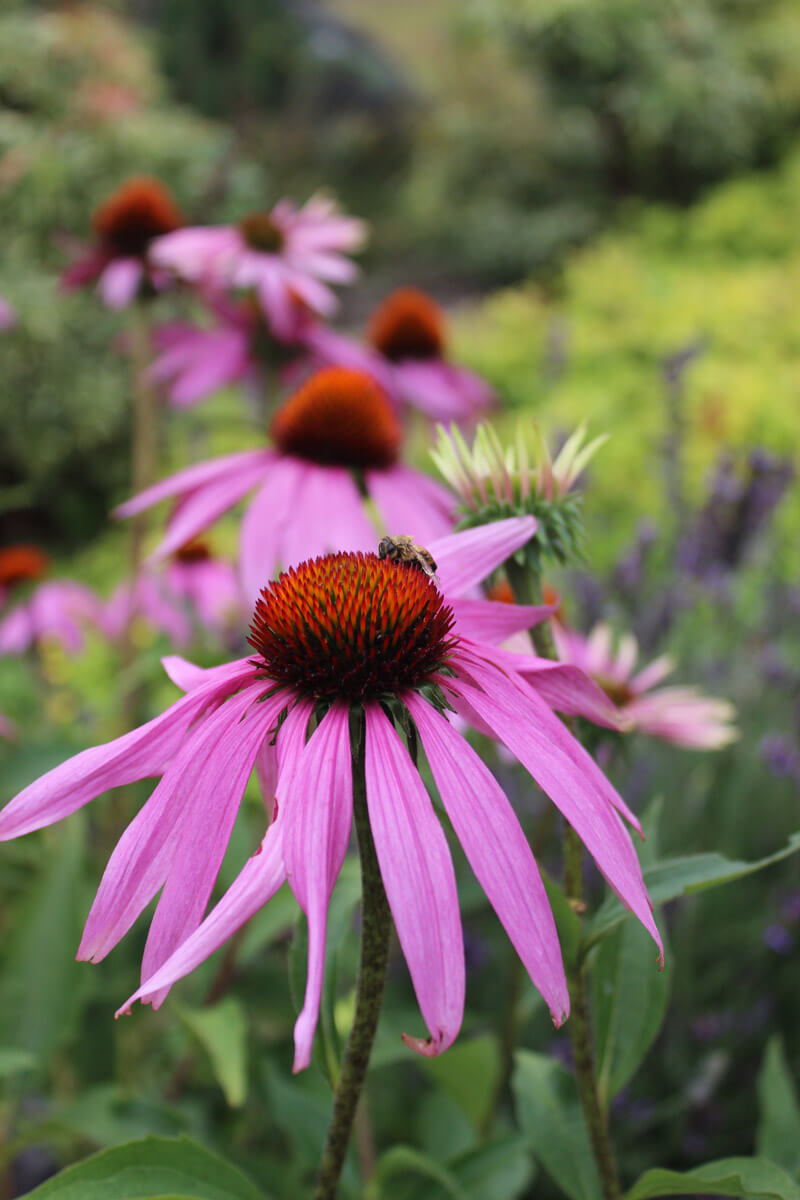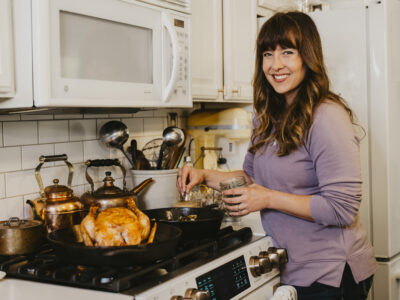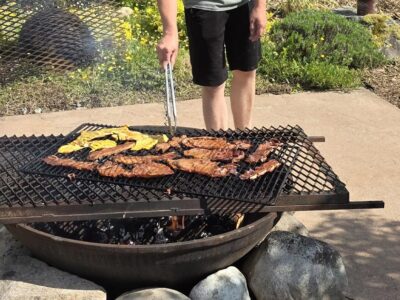Learn how to grow cut flowers for business or pleasure, plus why you’d want to! I’m chatting with Beth from Crowley House Flower Farm about how she earns a living doing what she loves.
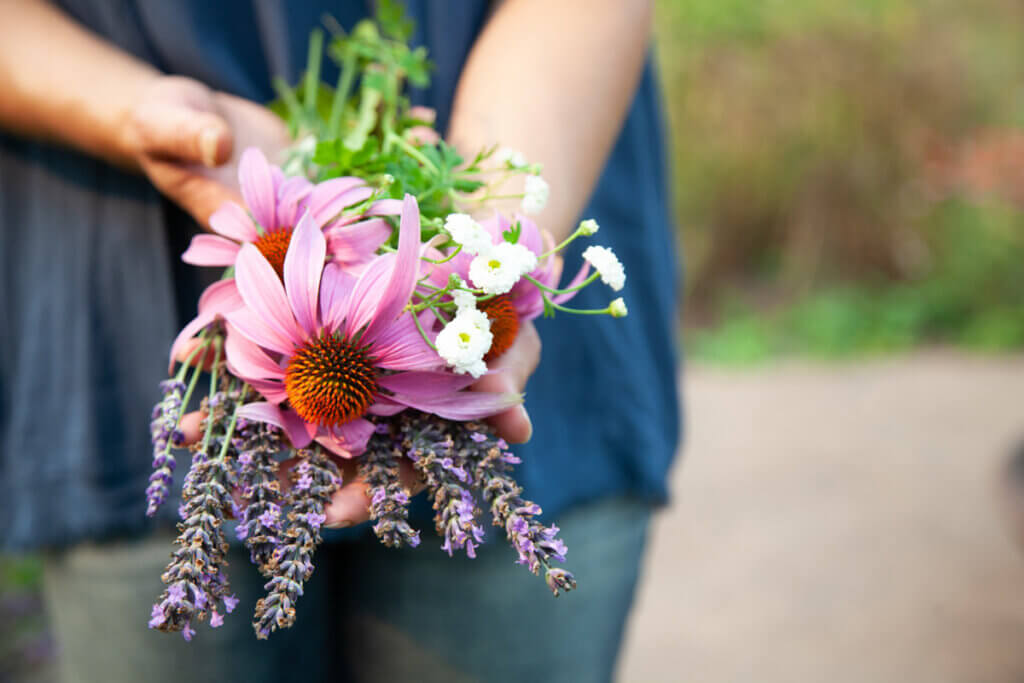
Today’s episode of the Pioneering Today Podcast is all about growing cut flowers. You may be thinking, “I don’t need to grow cut flowers,” or maybe even, “I already grow flowers in my garden, so this episode isn’t for me.”
Stick with me because, for decades, I didn’t put time or effort into growing flowers. Then I started studying herbalism and quickly realized how certain flowers (that double as medicine) can actually help my vegetable garden.
I love growing echinacea for tinctures, elderberries for an immune-boosting syrup, and other medicinal herbs in my medicinal herb garden.
Did you also know by growing cut flowers, you can help supplement the money coming from your homestead in a really big way? I’m willing to bet that this is something many of you have never considered and may be more interested in than you originally thought. Keep reading for more tips from Beth.
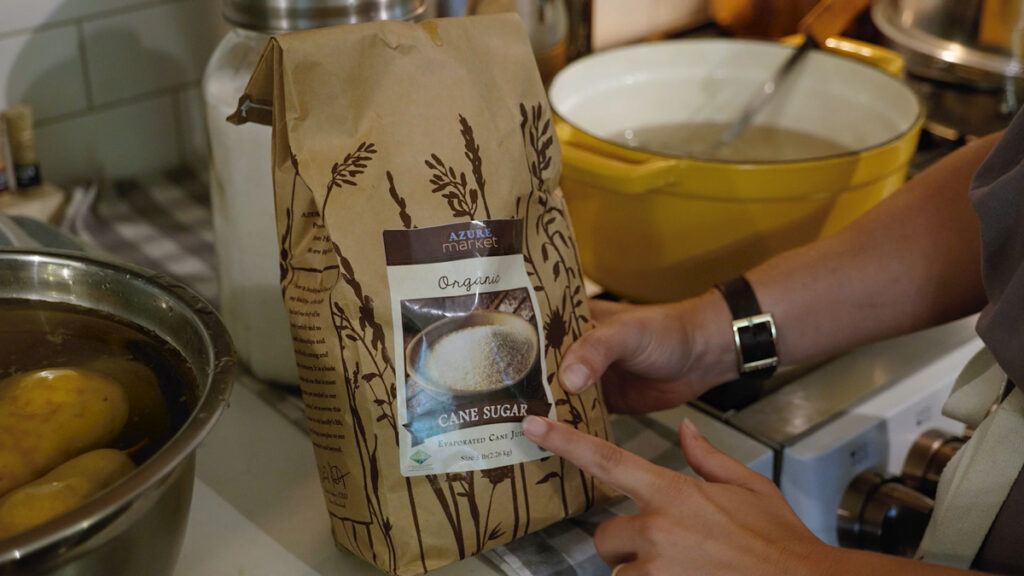
Table of Contents[Hide][Show]
Azure Standard
This podcast is sponsored by Azure Standard. What I love about shopping from Azure is that they source their products from small farms, so I know I’m helping to support these smaller companies.
I can always be assured the products I’m buying will meet my standards and are usually items I can’t find at my local grocery stores.
Another reason I love Azure is that I can purchase all of the items I can’t source locally, or grow myself, such as spices. This is the time of year I always top off my supply of baking spices such as cinnamon sticks, ground Ceylon cinnamon (not Cassia like most grocery stores sell), nutmeg, and all the other delicious aromatics that season up my food throughout the year.
If you’ve never tried Azure Standard before, go place your first order and save 10% off your entire order ($50 minimum) with my coupon code “Pioneering10” at checkout (that code is good through February 28, 2023).
Now, back to this week’s podcast!
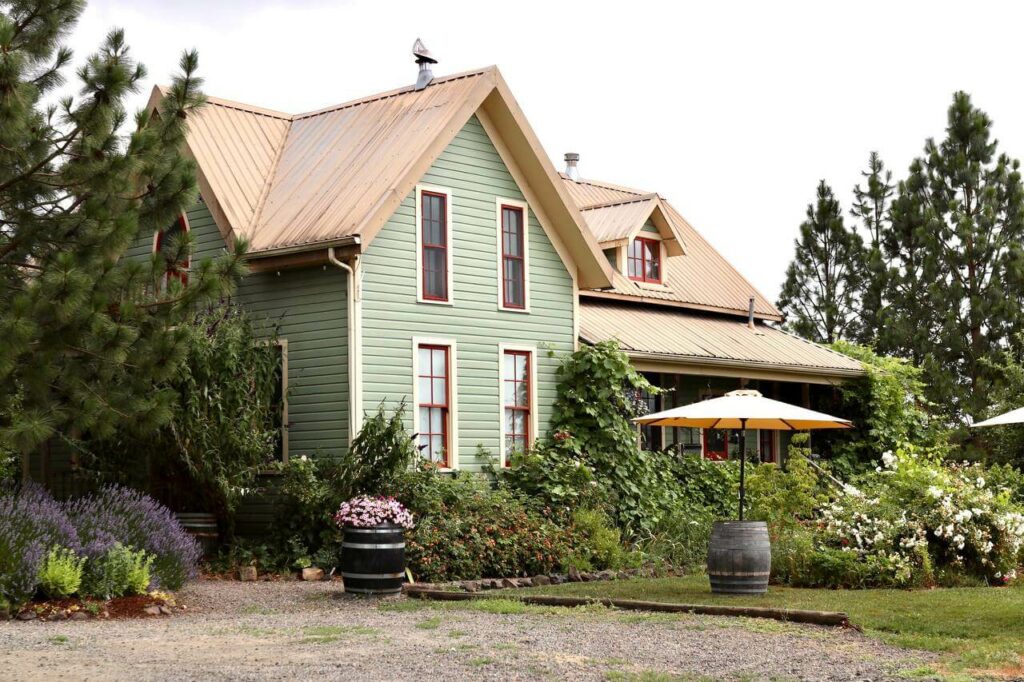
About Crowley House Flower Farm
I first met Beth a couple of years ago at the Homesteaders of America conference. Crowley House Flower Farm was a dream of Beth’s that started about fifteen years ago.
She was raised among 12 kids and grew up growing, raising and eating food from their home. She had a strong desire to pass this way of living down to her own children, but they had been busy building multiple homes in the suburbs while Beth worked in the medical field.
After 18 years, Beth knew it was time for a change. She wanted to get back to the roots she was raised with and to be a stay-at-home mom.
This is how the Crowley House Flower Farm was born.
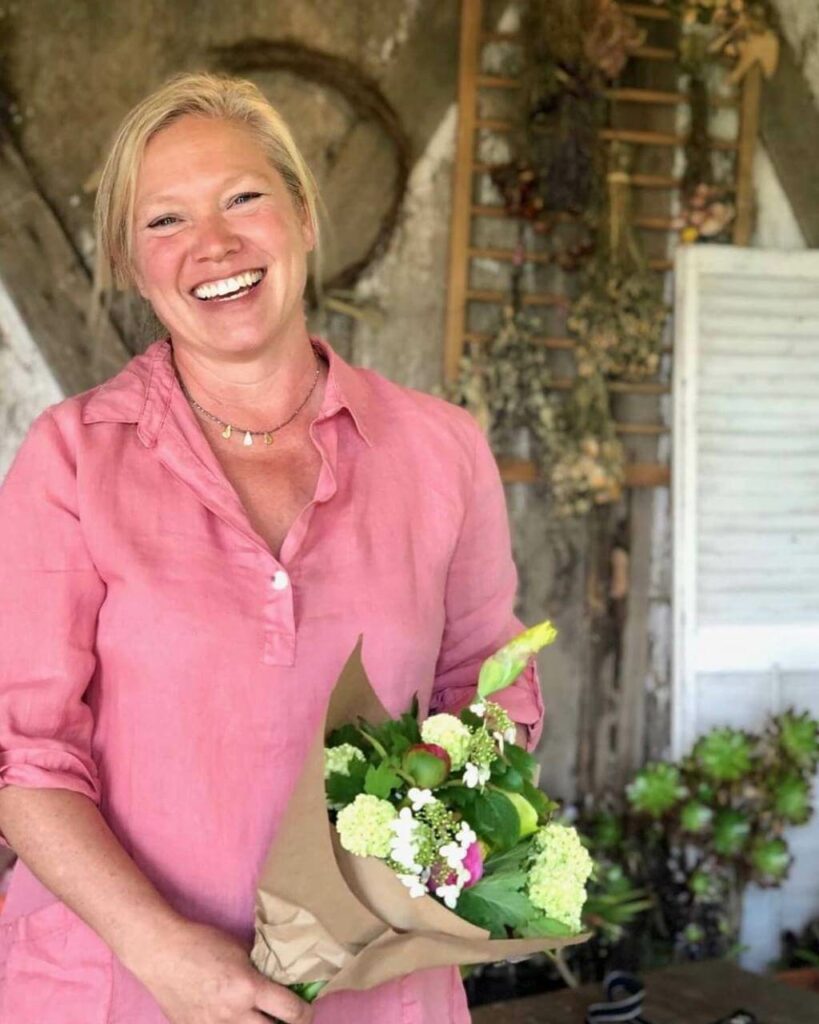
Beth and her family now sell flowers wholesale to Seattle, Portland and San Francisco markets as well as the local Ace Hardware. They also curate flower arrangements for large events and host a few select workshops throughout the year on their farm (more on this below!).
Beth likes to think of flowers kind of like the candy aisle at the grocery store. Just like a child sees a candy bar and wants to buy it, adults, when they walk past a beautiful bouquet in the market, want to toss it in their cart because it brings that immediate enjoyment.
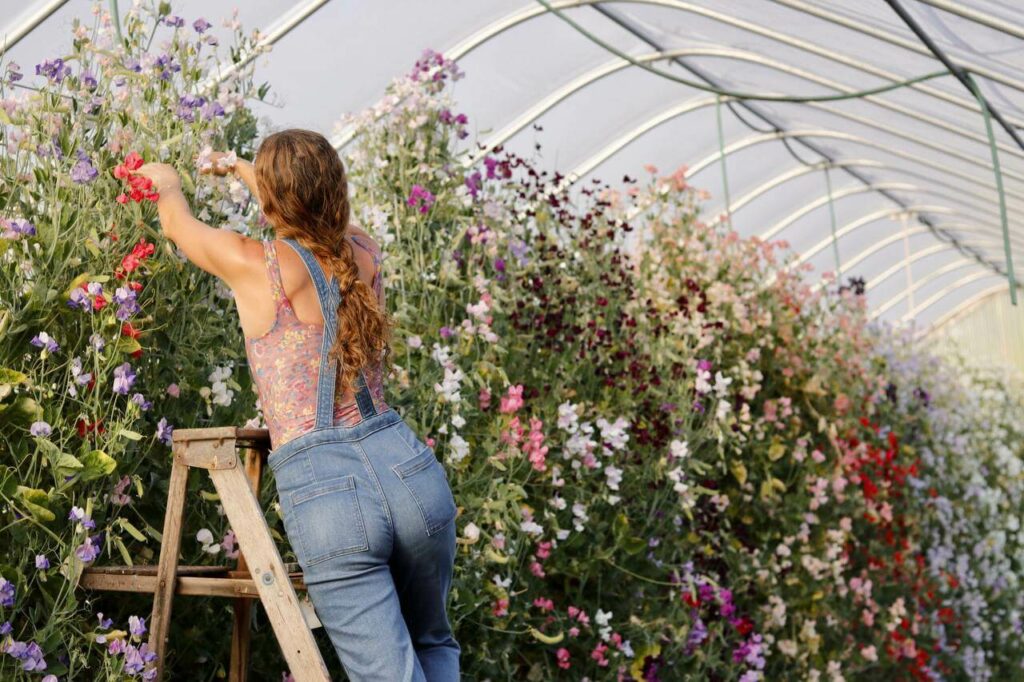
Why Grow Cut Flowers
You may be asking yourself why you should grow cut flowers. I was in the same boat for over a decade. Until as I mentioned before, I got into herbal medicine.
I was completely unaware of how much beauty is grown when growing herbs for medicine. Calendula, chamomile, echinacea, holy basil… there is so much beauty in those dual-purpose plants!
Not only that, but when you’re growing these medicinal herbs, they’re not the typical roses, tulips and daisies of many other flower farms. So the bouquets these flowers create are unique, wild and absolutely breathtaking.
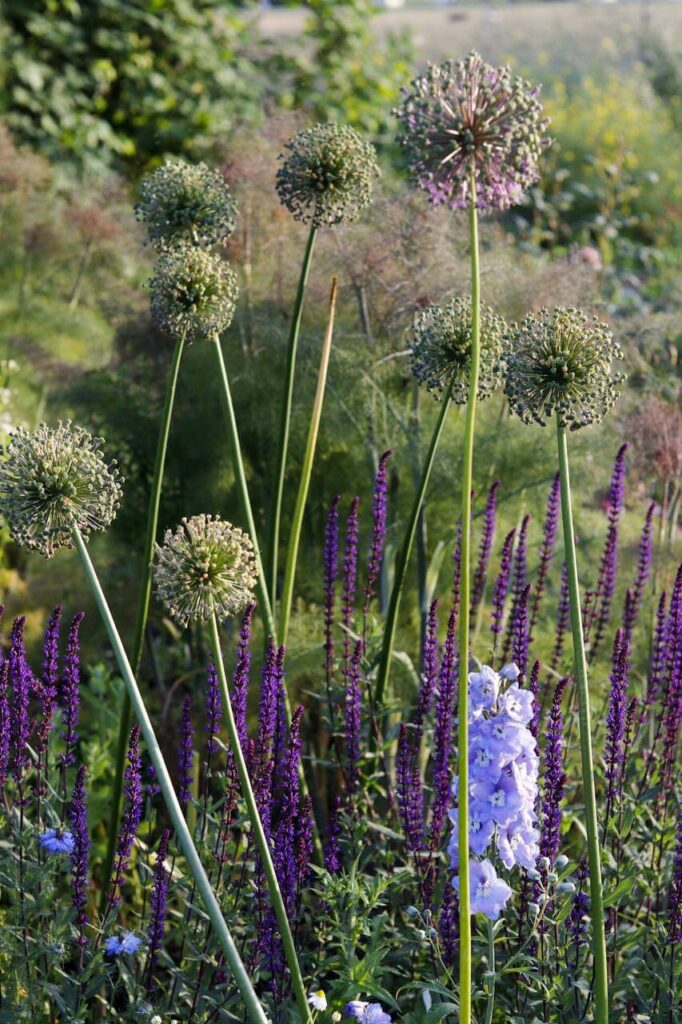
How to Get Started with Cut Flowers
If you’re thinking about implementing some cut flowers into your gardens, you don’t have to go from zero to 100 overnight (or in one growing season). Start by growing something that brings you the most enjoyment.
Or, if you’re like me, start with something you want to be able to use in your medicine cabinet. For me, echinacea and roses were an easy starting place. I enjoy the beauty of both of these flowers and already had medicinal purposes in mind. Roses just keep on giving with their rosehips, too. (Learn about the medicinal benefits of rosehips here.)
Don’t feel like you need a dedicated flower garden to get started. It’s easy to add flowers into the nooks and crannies of your garden. You’ll be amazed at how a few flowers can get tucked in here and there without taking up too much space.
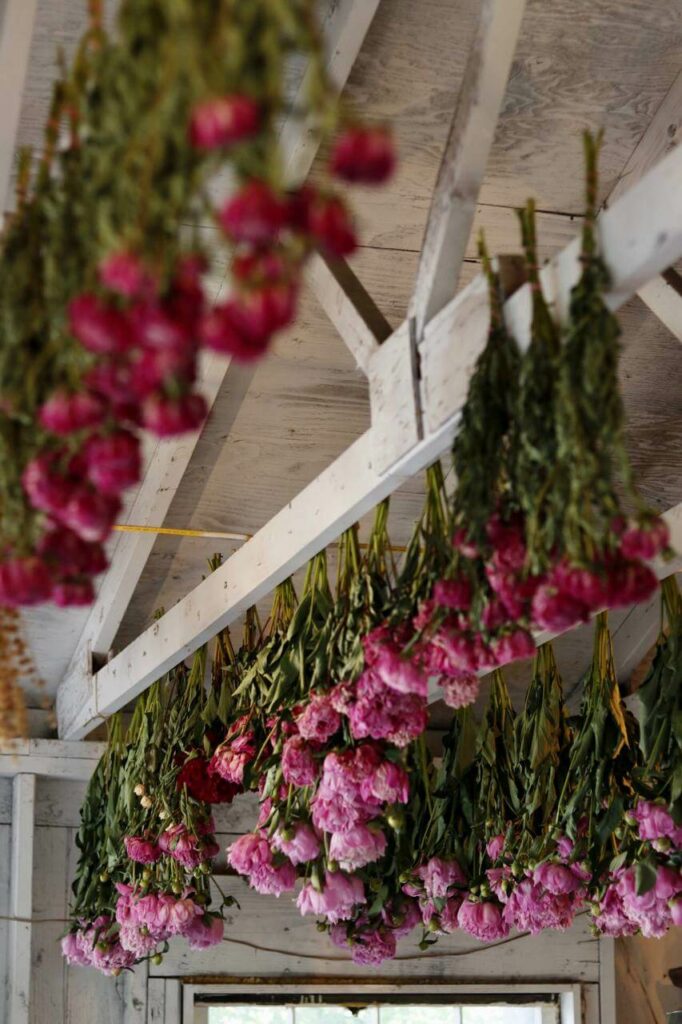
Plan Ahead
Beth gives some great advice when planning the flowers you want to grow. If you’re looking to do this as a cut flower business, be sure to consider the seasons for when each variety will grow.
Choose a variety of cut flowers that will bloom throughout each of the seasons. There aren’t many options in the dead of winter (unless you’re utilizing a greenhouse) but you can get creative with native greenery as well.
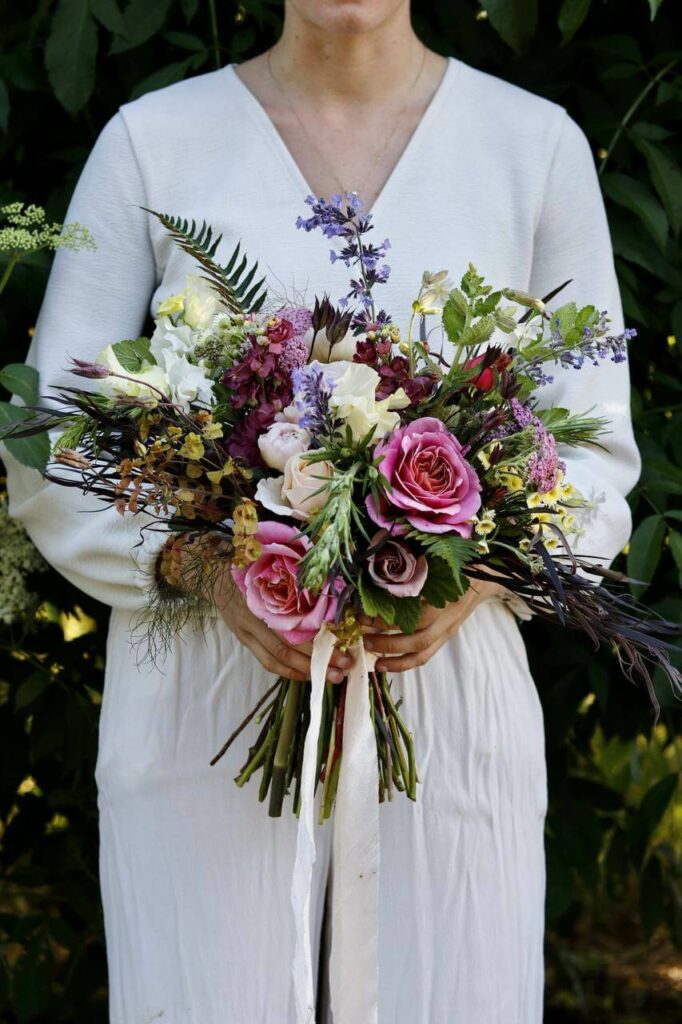
Think of the Bouquets
Consider the flowers that will complement each other, as well as which flowers will be in bloom at the same time. This will help you to plan out your planting season.
Beth does a lot of mixed bouquets (anywhere from 100-200 mixed bouquets a week, year-round!). It took her a while to figure out what to grow, when to plant, what flowers go well together and what types of flowers will last in a bouquet.

Cut-and-Come-Again Flowers
Get more rewards with less work by planting flowers that will regrow after being cut. Snapdragons, sweet peas, and marigolds are cut-and-come-again flowers, so they’ll continue to give even after cutting.
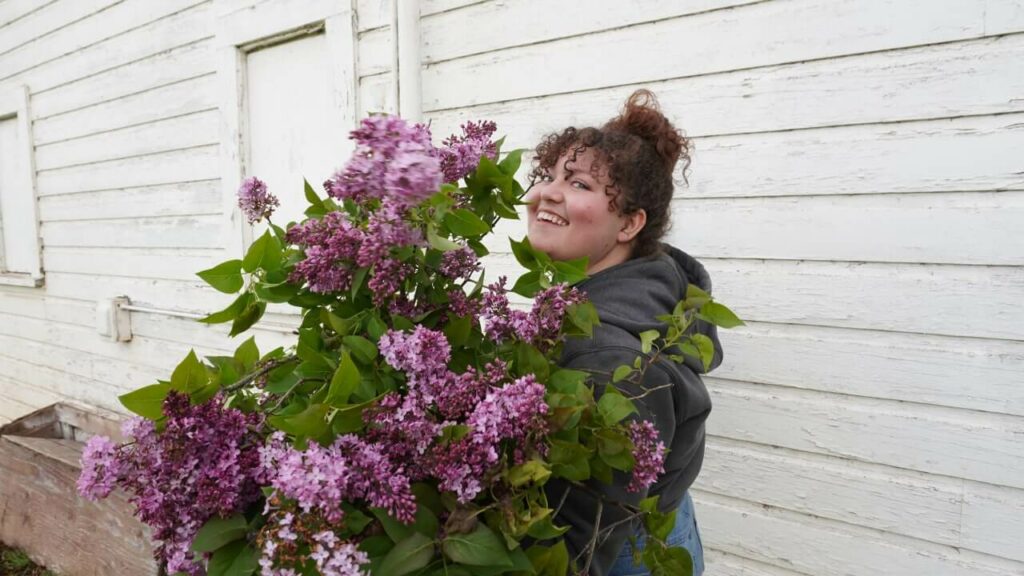
Plant Perennials
Growing some perennials that also work in a bouquet is a smart idea. Think outside the box! Beth grows thornless raspberries, blueberries and thornless blackberries to use as greenery in her bouquets. People love when they get a tiny cluster of berries on their bouquet as well.
You can also utilize apple whips (those suckers that grow off the bottom of your apple tree) and so many other creative items from around your home. They make a great filler in mixed bouquets.
Beth also utilizes herbs like mint, rosemary, calendula and bee balm to create very interesting bouquets that don’t look like a traditional arrangements.
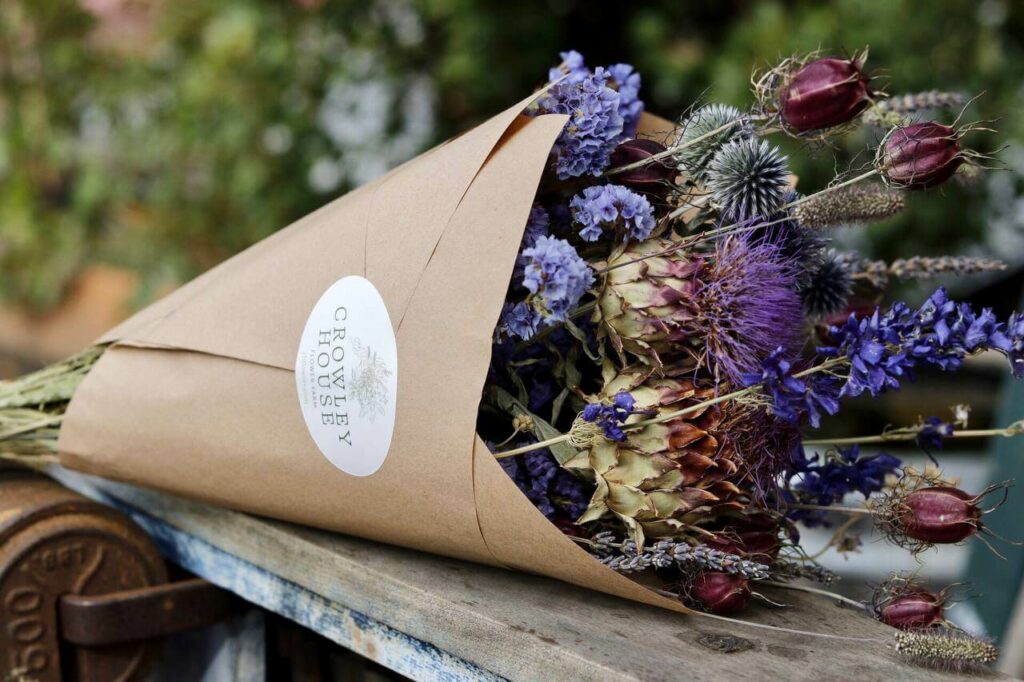
When to Cut Flowers for Bouquets
When you practice cutting, you’ll quickly learn when to cut your flowers, when they’re not open enough, when they’re opened up too much, etc.
It’s a lot like the produce at the grocery store. None of it was picked at pique ripeness, it has to be picked a little early in order to make it to you and not be over-ripe or rotten.
The same goes for cut flowers. If you cut them right on time, they’ll be wilted by the time you get them to the store for resale. Too soon and they won’t bloom and create a beautiful display.
This takes trial and error… and patience! Remember that note book? Take notes of everything!
Learn As You Grow
Beth’s best advice is to plant a seed and watch to see what happens with it!
If you know anything about me, you know I’m huge on note-taking, so I’ll be experimenting like this with our new cut flower garden.
Beth can’t simply say, grow X, Y, and Z flowers because they may not grow well in your region. You have to do the research. But this is the fun part!
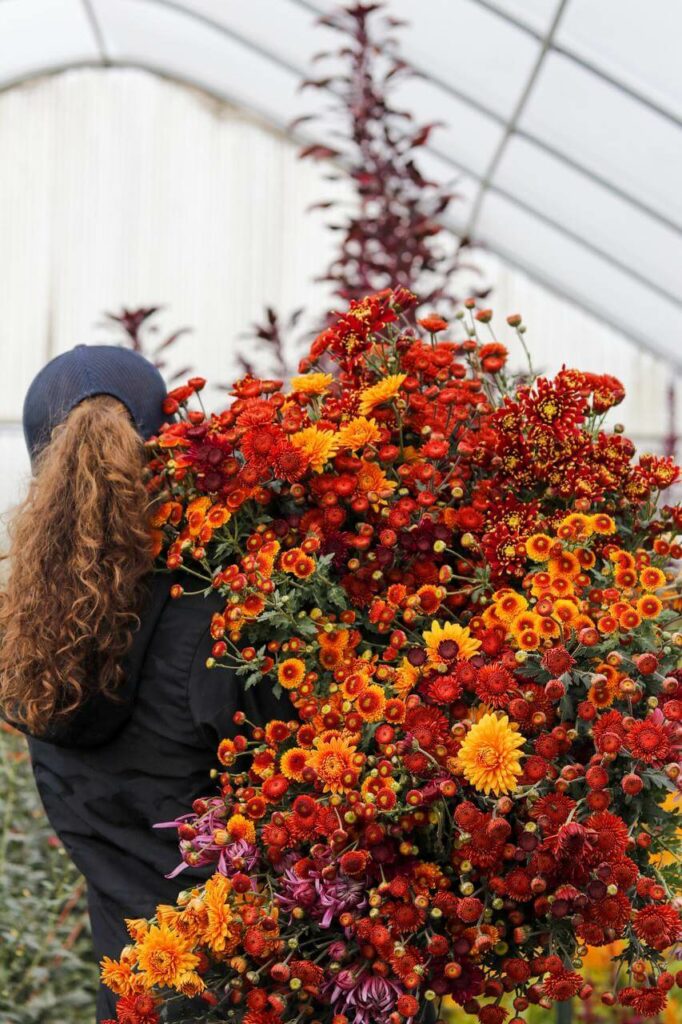
Growing Flowers Year-Round
I asked Beth how she’s growing flowers year-round to be able to sell mixed bouquets all year long. Her answer surprised me! Though she does use a greenhouse that’s 3000 square feet (double-walled and unheated), she also creates textured bouquets with very few flowers.
Beth uses things like holly, evergreen branches, woodland fern, mossy branches and will pair them with dried flowers if she doesn’t have any fresh flowers growing.
There’s no reason you can’t be selling year-round, too.

Selling Flowers to Stores
Depending on where you live, it may be more or less difficult to get your cut flower arrangements into stores. Beth has some great ideas when it comes to this.
How to Approach Stores to Sell Cut Flowers
When Beth first got started she talked to everyone. At the checkout line in the grocery store, if anyone asked what she did she would share with enthusiasm.
When she got together with friends, or went to a coffee shop, she’d share what she does, what her vision is, and what she could offer.
Oftentimes she would bring in a sample of her work to show the owner of the store, or leave with a clerk to give to the manager.
But you don’t have to be selling to large markets to make a living. Is there a farmstand nearby? See if you can drop off a few bouquets each week and see how they sell.
After a while, you may find there are enough locals to help support your hobby farm.
The options are virtually endless.

Pricing for Cut Flowers
When you see a traditional cut flower arrangement sold at a store for $20, they’re usually selling at a 50% markup rate. This means if a store is going to sell your flower arrangements for $20, you’ll be getting $10 for each bouquet.
If you’re not sure, ask the retailer what they’re looking for. It’s good to know your audience before making a large investment in either time or resources.
Beth mentioned that the Ace Hardware she sells to has a price point between $15-25 dollars per bouquet. She knows she needs to create bouquets that cost her $7.50-12.50 to make.
If this is too steep for your area, you could also offer small bundles of about three flowers with a little greenery wrapped in cute paper to sell for $10 ($5 wholesale).
Think outside the box of what you typically see at a florist or in the grocery store.
Usually, if you’re offering something unique, it will catch people’s attention.
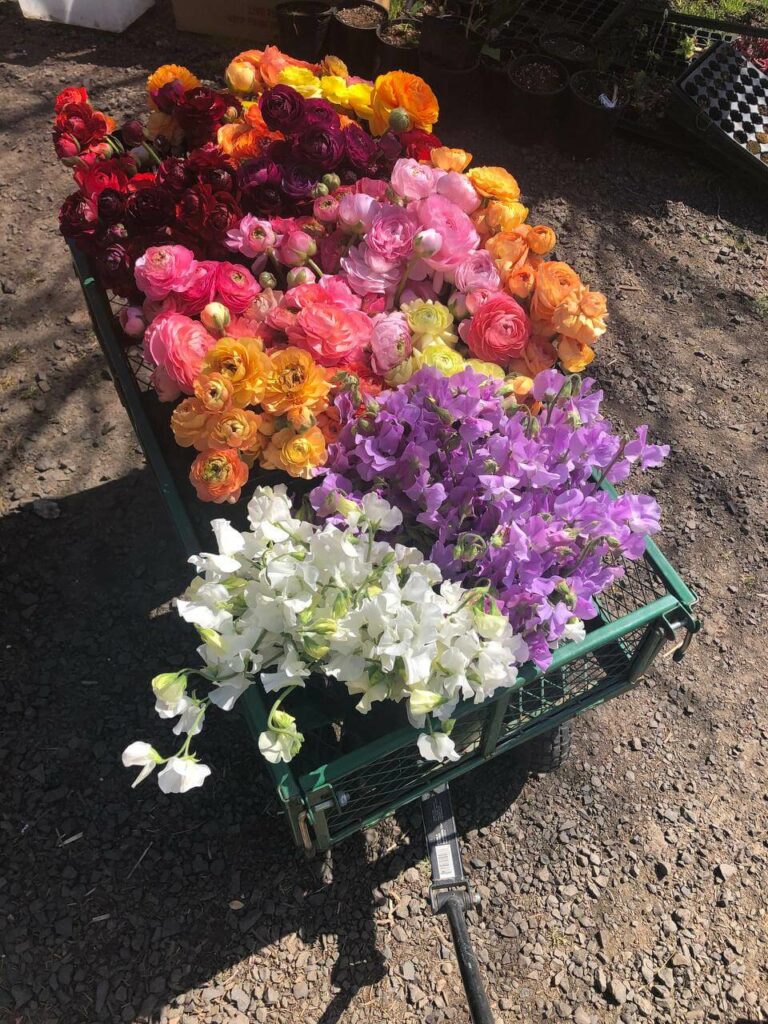
Know Your Volume
To make selling cut flowers a business, it’s a volume game. A lot of time, these retailers will expect product each week and you need to be sure you can deliver.
Beth says don’t over-commit yourself, but usually, if you can offer items in volume, this is where the real money will start to come in as a business.
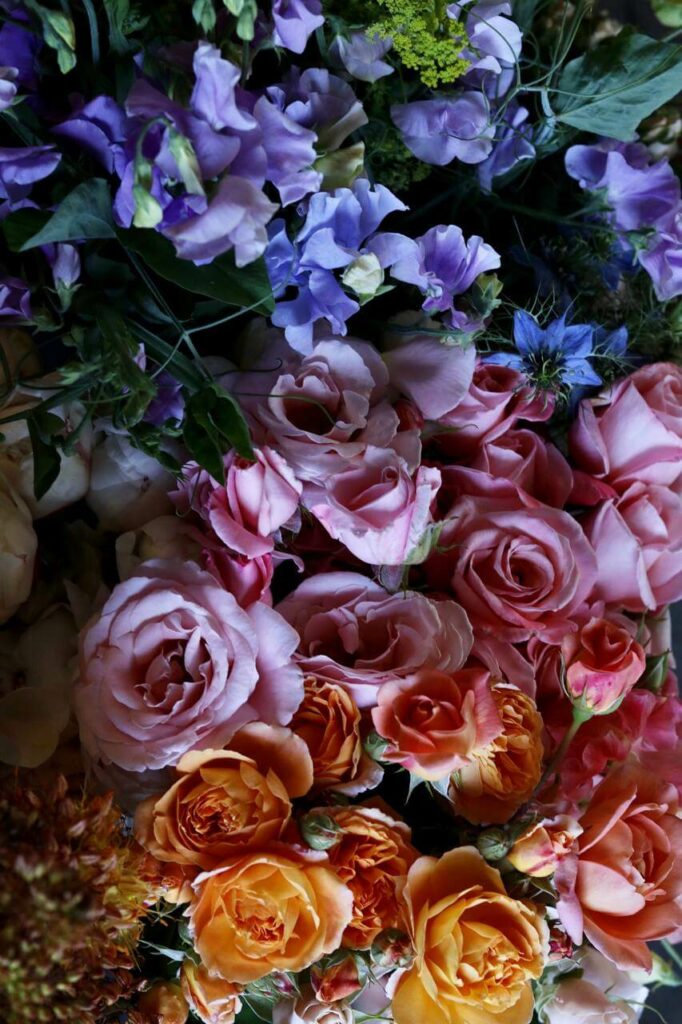
Utilize Social Media
People go crazy for photos of cut flower arrangements! Check out Crowley House on Instagram for some inspiration.
Then, start photographing your arrangements and get yourself an Instagram account!
That’s just one great way to get the word out about your products.
I hope this podcast has inspired you as much as it has me to grow your own flowers. Whether for enjoyment or to earn a little extra income, I don’t think any of us will regret growing flowers.
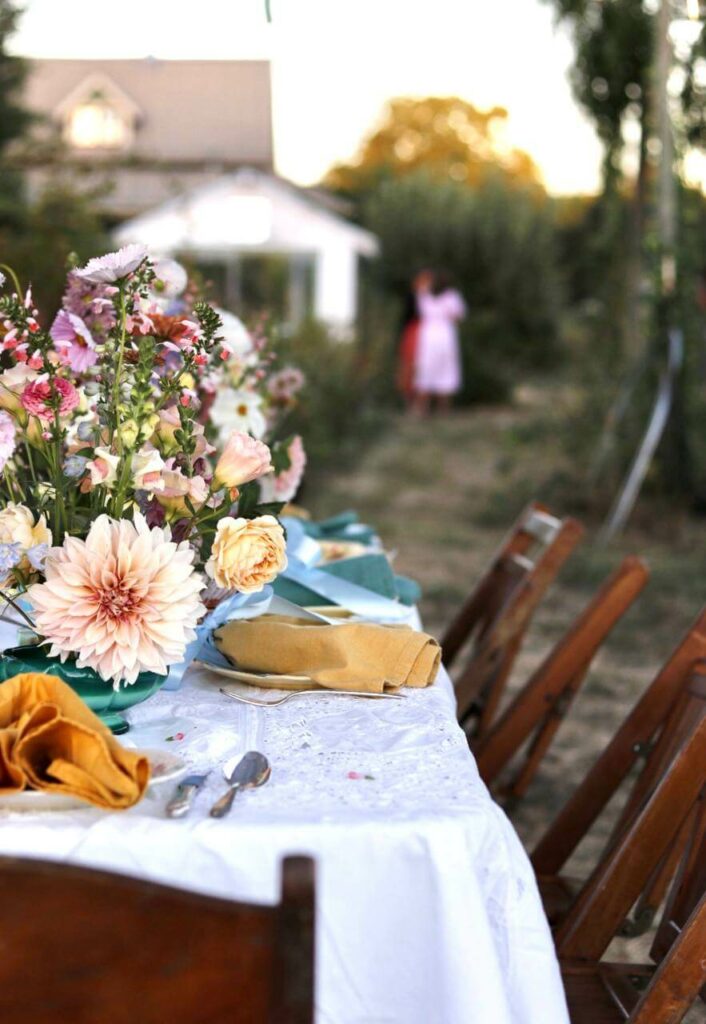
Where to Find Crowley House
If you’d like to connect with Beth or other members of the Crowley House Flower Farm, you can find them at the Crowley House Flower Farm website or listen to their podcast, “A Blooming Good Time Podcast.” You can also find them on social media at A Blooming Good Time on Instagram or Crowley House Flower Farm & Studio on Facebook.
Verse of the Week: Luke 12:27
[fusebox_transcript]
